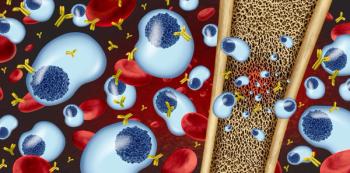
Drug Disposal Data Raises Questions Over Mail-Order Pharmacies
Medication waste may be more likely among patients who use mail-order pharmacies, rather than retail pharmacies.
Medication waste may be more likely among patients who use mail-order pharmacies, rather than retail pharmacies.
A new study funded by the Community Pharmacy Foundation also suggests that mail-order disposals tend to involve more expensive brand-name medications than retail disposals.
The researchers examined more than 6500 prescription consumers between June 2012 and June 2013 via a voluntary survey available at locations participating in the National Community Pharmacy Association’s (NCPA) Dispose My Meds Program.
The researchers found that disposals that had more than 80% of the medication remaining were more likely to be from mail-order pharmacies than retail pharmacies (58% of mail-order pharmacies compared with 37% of retail pharmacies), which raises questions about nonadherence among mail-order patients.
Two other key findings were discovered, NCPA spokesman Kevin Schweers told Pharmacy Times.
First, the study authors found that patients who disposed 100% of their medication were more likely to have received their medication via mail-order pharmacies. Schweers explained that because 100% was returned, the patient did not take any of it and, likely, the medication was not needed in the first place and should not have been shipped.
Secondly, the medication that was returned for disposal was more likely to be brand-name medication when it came from mail-order refill patients. Since brand-name medication is typically more expensive, it was money down the drain, Schweers argued.
“Mail order is not for everyone,” Schweers told Pharmacy Times. “Patients should have equal access to the pharmacy option that works best for them, whether an independent pharmacy, a big-box store, or mail order. When patients are required against their will to use mail order for certain prescription drugs, it creates barriers to the care community pharmacists provide. It can make the optimal patient-pharmacist relationship difficult to achieve.”
Schweers added that when patients don’t have access to the pharmacy and pharmacist of their choice for medication, adherence can suffer.
Previous research demonstrated that the bond between pharmacists and patients is essential to medication adherence. Community pharmacists can monitor and improve medication adherence, coordinate patient care, and monitor for potential interactions or adverse effects when there is face-to-face contact.
In mail-order systems, however, this contact may be lost and can even raise safety concerns, Schweers said.
“Community pharmacies are often the sole resource for medications and patient education and ensure that important information is being conveyed to the patient from a health care professional with whom they have had a long standing relationship,” he concluded. “Community pharmacists play a critical role in providing quality care to patients by ensuring safe and appropriate medication use as well as providing prevention and wellness services such as immunizations, medication therapy management, and chronic care management.”
Newsletter
Stay informed on drug updates, treatment guidelines, and pharmacy practice trends—subscribe to Pharmacy Times for weekly clinical insights.




















































































































































































































